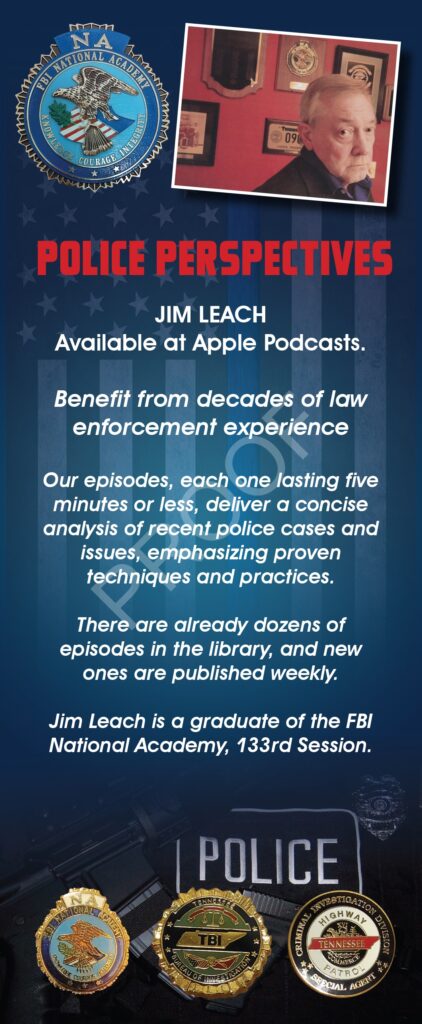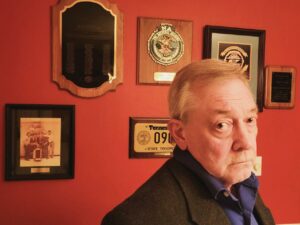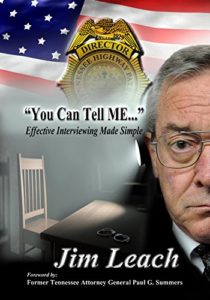The case was 5 years old and about as cold as a case can be. We had run down every possible lead we could find.
I had gone so far as to meet with FBI Profiler Roy Hazlewood at the FBI National Academy in Quantico Virginia. It was 1983 and I was studying serial offenders as part of my training at The Academy. Roy was one of the original profilers in the Behavioral Science Unit and he was fantastic. I had never heard about serial killers before, but the more Roy talked, the more interested I became.
At my request, Mr. Hazlewood agreed to take a look at my cold case. I called the TBI office in Nashville and asked for a copy of the case file to be sent to me. They said the TBI file was confidential and they couldn’t send it to me. I was a little bit upset. They didn’t seem to be very concerned whether I was upset or not..
Special Agent Hazelwood discussed the case with me for about an hour. He remembered me several times that any conclusions he reached would be “informal” since he had no case file or crime scene photos. No autopsy report. At the end of our conversation, he said, “OK, here’s what I think you are looking for.” He gave me 8-10 characteristics the killer would possess. Hopefully, one day we would find out if Roy was on target with his thoughts. We would have to find the murderer to know for sure.
About a year after I graduated from The National Academy, a local department got a call from a law enforcement agency in another state. A car from Jackson Tennessee was spotted at a suspected drug dealer’s residence in their city. The narcotics officer from Alabama wanted a background check on the owner of the vehicle from Jackson.
After discussing the information about the owner of the car (and yes, he was a drug dealer), the Alabama officer said, “By the way, we got a guy in jail for murder that used to live in Jackson.”
Thank goodness the local officer taking the call was my old partner, Dennis Mays. He was one of the sharpest officers I ever knew and he immediately recognized the similarities between the murder in Alabama and our cold case.
Myself and an investigator from the police department traveled to Alabama to interview the suspect, Ken. He had been appointed a public defender since Ken could not afford to hire an attorney. We met with his attorney, and he asked, “Are you going to talk to him about his case in Alabama?” I replied, “With all due respect, we don’t care what happened in Alabama, we are only interested in our murder in Tennessee.” “If he’ll talk to you, interview him all you want,” the lawyer told us. We headed to the jail to talk to our suspect.
Ken was a big guy. He was unusually soft-spoken and polite. He had grown up in Jackson Tennessee and then hit the road. He had traveled all over the country as an over the road truck driver and a carnival worker. He had no serious criminal history. After reading him his rights and telling him what we wanted to speak to him about, Ken readily agreed to talk to us.
We began by asking him about the different places he had lived and worked. Our questions centered around things we were familiar with and we knew the answers to. This interviewing technique allowed us to observe what Ken’s demeanor appeared was when he was being truthful and when he was honestly trying to recall information in order to answer our questions. It is essential to know how a person looks and speaks when they are being honest if you are going to be able to detect an attempt to be deceitful! This tactic is described as “getting a baseline” on the person you are interviewing.
During our conversation Ken began to divulge to us he sometimes had issues in dealing with women. He told us about some problems with his former wife. He went on to describe how he would “pick up” girls in bars and attempt to have a relationship with them. He was becoming more emotional the longer he talked. He shared with us a scenario that sometimes developed when he was trying to “make out” with his victim.
By this time he was almost whispering and staring at the floor. He appeared to have traveled to another world where only he could go.
While Ken was talking, I had slowly gotten out of my chair and eased around the desk. I pulled up another chair and began to move closer and closer to the suspect. Ken continued recounting his experiences as if he was the only one in the room.
I was knee to knee with him when he whispered, “Sometimes when I’m making out with them, all of a sudden, they turn into my wife, and I hurt them, and I hurt them bad, and I don’t care how bad I hurt them. Then I throw them out of the car. But I never killed nobody.”
He was leaning over with his elbows resting on his knees. He was wrenching his hands so hard the muscles were standing out on his forearms. Tears were streaming down his face and his nose was running uncontrollably.
I started speaking to him. It was the first time I had said a word since he had gone into “his world”. I had my hand on his shoulder and I was talking very softly. “I know you didn’t mean to kill them Ken, you are not that kind of man.” “I didn’t kill nobody” he replied. “Ken, you have got to get this off your chest, it will kill you if you don’t”. I kept repeating that theme over and over again and in a minute Ken began to nod in agreement with me. Ken and I had become companions. I was his friend, I understood. I was the guy he could tell a secret to.
The investigator with me decided this was the time he needed to get involved. He stood, put his hands on the desk, leaned over, and said, “Yeah, but you still got the blood on your hands”.
Ken immediately straightened up and asked to go back to his cell.
There was almost another killing in Alabama that day…
The author, Jim Leach, served as Special Agent in Charge of criminal investigations with the Tennessee Bureau of Investigation.



